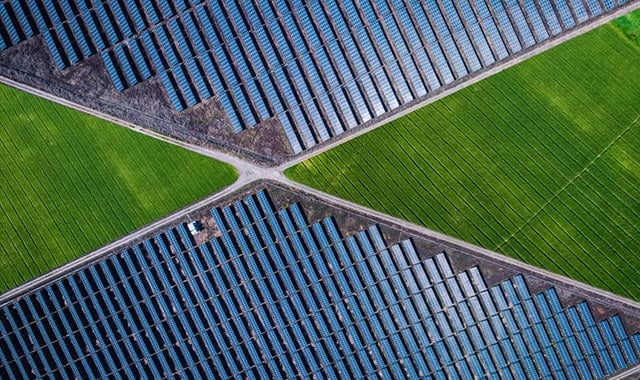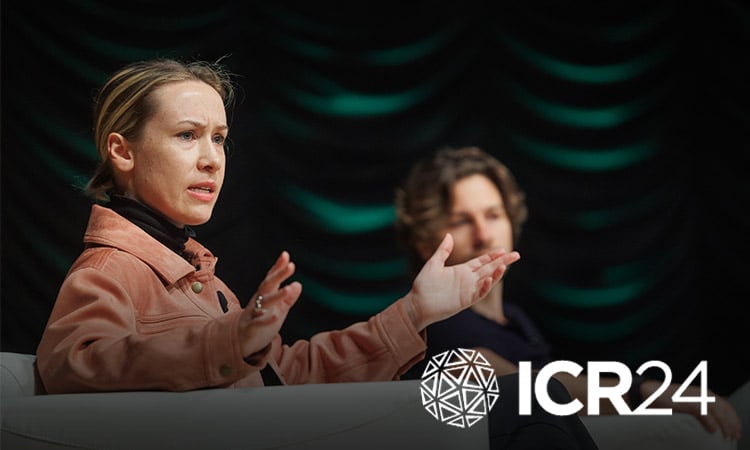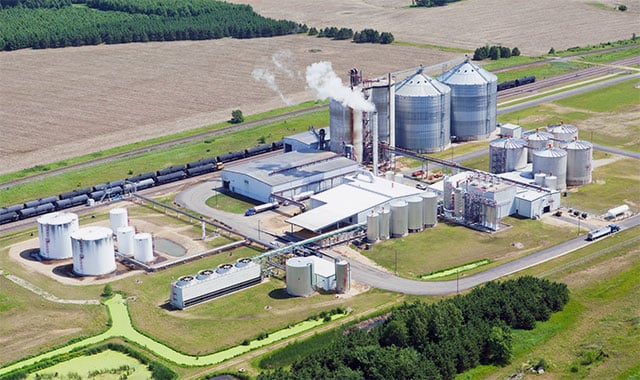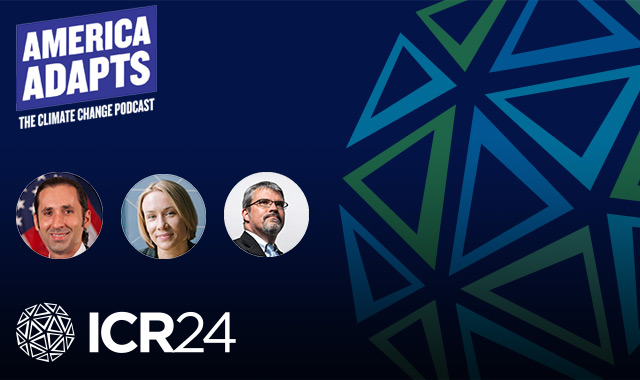Understanding and Mitigating Carbon Capture and Storage (CCS) Risk

Carbon capture and storage (CCS) is gaining ground as a strategy for managing carbon emissions from power plants and other large point sources. As with any large technical or infrastructure project, there are risks involved that must be understood and managed. A methodical and proactive approach to CCS risk management can help implementers minimize potential risks and maximize the odds of a successful long-term outcome.
Sources of Risk in CCS Projects
CCS has been successfully demonstrated in large storage projects around the world as well as in enhanced oil recovery (EOR) projects for the oil & gas industry.
- The Sleipner Project in Norway has been in continuous operation since 1996 and sequesters roughly one million tons of carbon emissions annually.
- The CarbonSAFE Initiative, launched in 2016, has 24 CCS projects across the US with plans to sequester 50+ million tons of carbon at each site over a 30-year period.
- The Quest facility in Alberta, Canada, has been in operation since 2017; more than 7.7 million tons of carbon have been sequestered as of the end of 2022.
These projects and others show the potential of CCS to help manage carbon emissions (CO2) as the world transitions to a “NetZero,” or carbon-neutral, economy. At the same time, they have provided important insights into the possible risks of CCS and how they can be best managed. CCS risk arises from the complex nature of these projects. Carbon capture and storage projects are characterized by:
Large Capital Investments
CCS projects require substantial upfront investments in infrastructure, equipment and implementation costs. This includes the expense of installing capture technologies, constructing pipelines for transportation, and ensuring safe and secure storage facilities. High initial costs can make securing funding and investment challenging; CCS projects may require government support or incentives to be financially viable.
Long Time Horizons
CCS projects have long development cycles, from planning and construction to operation and monitoring. The lifecycle of a CCS project can span several decades, including an injection stage lasting 20-30 years and long-term monitoring of the injection site to ensure that carbon remains safely sequestered. The long time horizons of CCS projects introduce uncertainty regarding future environmental policies, regulations and market conditions for carbon credits.
Technical Complexity
The technical complexity of capturing CO2 efficiently, transporting it safely, and storing it securely involves numerous operational challenges. Selecting and implementing the right capture technology for a specific plant and application and ensuring efficient operations requires a high level of technical expertise. The injection and storage stage also presents technical challenges and requires specialized knowledge in subsurface geology and geophysics, computer modeling, well construction and management, and long-term monitoring techniques.
Multiple Stakeholders
CCS projects involve a wide range of stakeholders, including governments, regulatory bodies, industries (particularly high-emission sectors like power generation, cement and steel), local communities and environmental groups. In addition, many CCS projects involve consortiums of carbon emitters along with a variety of service providers, technical experts and vendors responsible for handling various pieces of the implementation. This can make coordinating across the CCS value stream highly challenging.
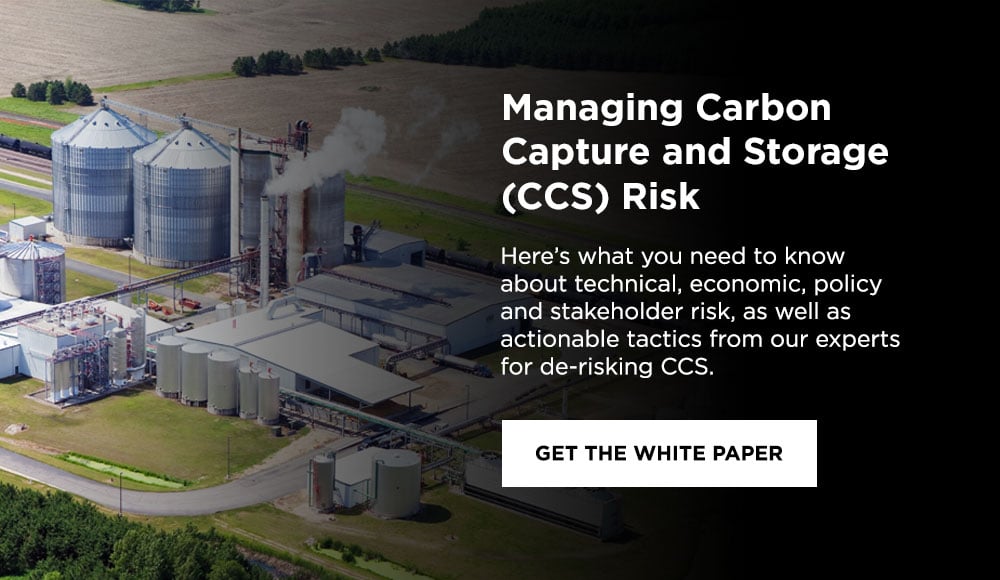
What Are the Risks of Carbon Capture and Storage?
Carbon capture and storage projects can involve several kinds of risk, including economic, technical, policy, and stakeholder risks. These risks must be evaluated across all components of CCS: capture, transport and storage. Some CCS risks—including economic, policy and stakeholder risks—cross multiple parts of the process. These can include cost uncertainties and unexpected budget overruns, changes in the regulatory environment or carbon markets that impact the economic viability of CCS, permitting issues, and community stakeholder opposition to pipelines or storage site locations. In addition, each component has specific risks related to technology selection, maturity, safety and efficacy.
Capture
During carbon capture, the effectiveness and efficiency of carbon capture technologies may not meet expected levels, leading to lower CO2 capture rates or higher operational costs than expected. Power plants implementing CCS must also consider the energy penalty of the capture technology—that is, the reduction in electricity output as a result of putting energy into carbon capture.
Transport
Technical risks for transport depend on the transport method selected. Transporting CO2 via pipelines involves risks such as pipeline corrosion, leaks and integrity failures, which could lead to CO2 emissions or safety hazards. Transport by rail or truck presents the risk of crashes and spills.
Storage
CO2 storage risks are often at the center of risk discussions for CCS projects. The primary concerns here are CO2 leakage at the injection site and unanticipated plume migration under the surface. These scenarios, in addition to risking the re-release of captured CO2 into the atmosphere, may present other potential risks to human health and the environment.
De-risking CCS
While CCS risk cannot be completely eliminated, risk can be managed and minimized across the CCS value chain. Risk management for CCS must include discussion of both uncertainty (the range of possible outcomes for a course of action) and risk (the probability of a specific adverse outcome). A holistic, unified, methodical approach to risk management across the capture, transport and storage components can reduce both risk and uncertainty for CCS. Tactics include:
- Cross-chain risk management, with consideration of the interdependencies and economic or technical tradeoffs involved in decisions made at each part of the process.
- Project schedule and budget integration across all components.
- System design integration, with the goal of creating an overall system that is flexible, resilient and compliant.
Battelle uses a variety of strategies to help energy and industry clients de-risk CCS and make effective mitigation decisions. We’ve been at the forefront of carbon capture and storage for more than 25 years, with leadership roles in large CCS pilot and demonstration projects such as CarbonSAFE and the Midwest Regional Carbon Initiative (MRCI). These projects have given us unparalleled insights into the risks and challenges of implementing CCS at scale and strategies for successful risk management. Our team brings extensive experience in subsurface geology, geophysics and reservoir modeling that we apply to site characterization, modeling and long-term monitoring to mitigate the risks of CO2 injection and storage.
Download our whitepaper "Managing Carbon Capture and Storage Risk: A Methodical Framework for Proactive Risk Management" to learn more about our risk management approaches for CCS.
Related Blogs
BATTELLE UPDATES
Receive updates from Battelle for an all-access pass to the incredible work of Battelle researchers.

